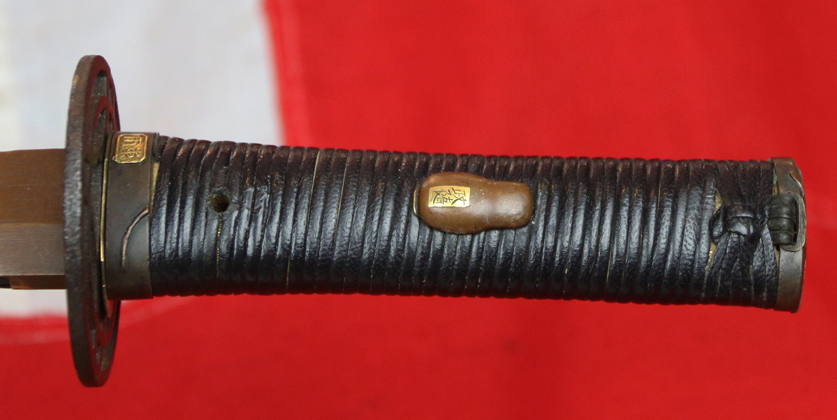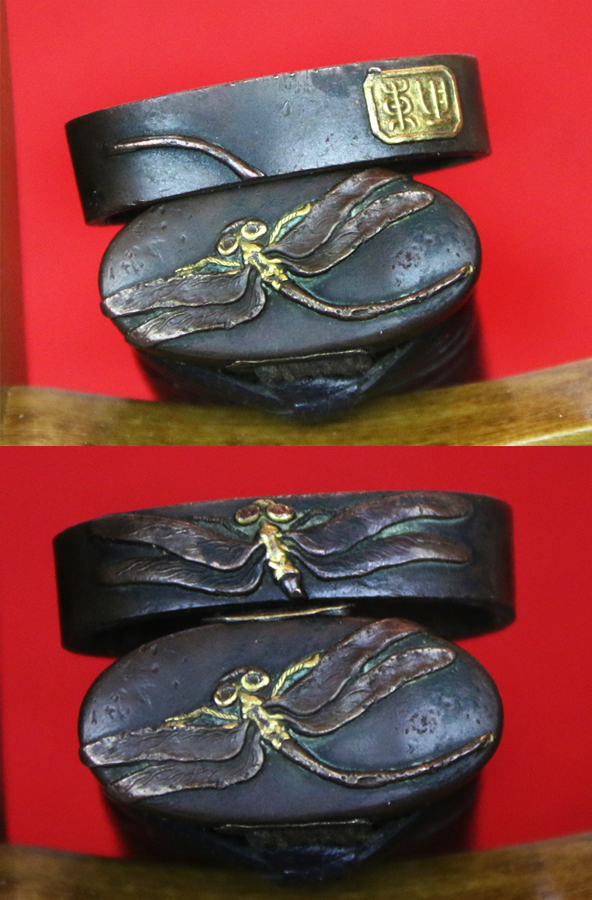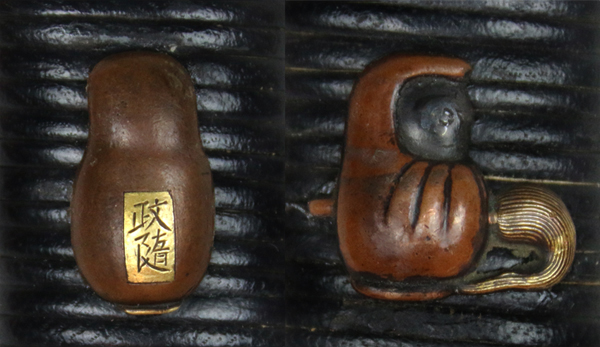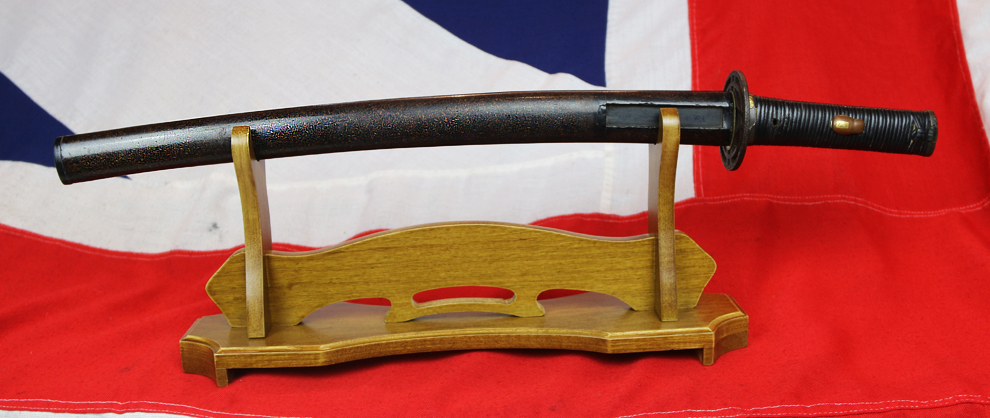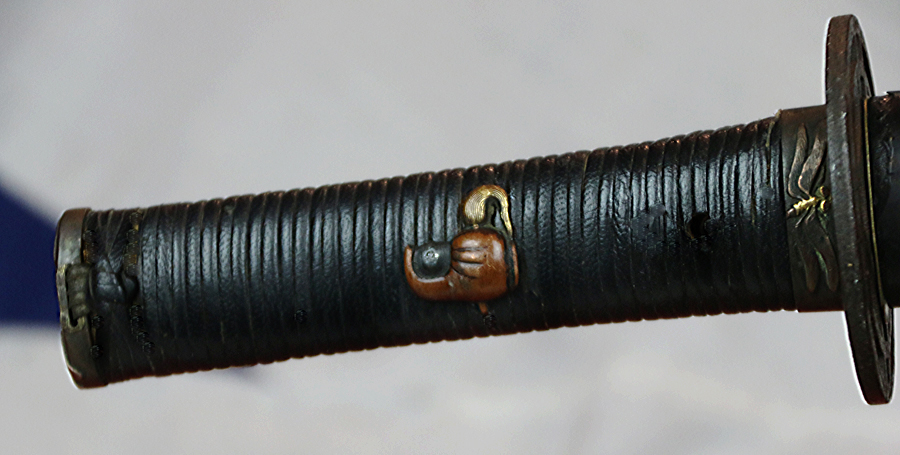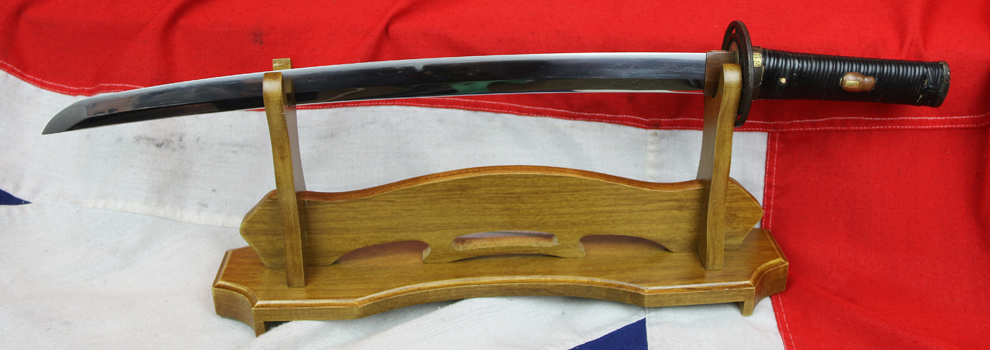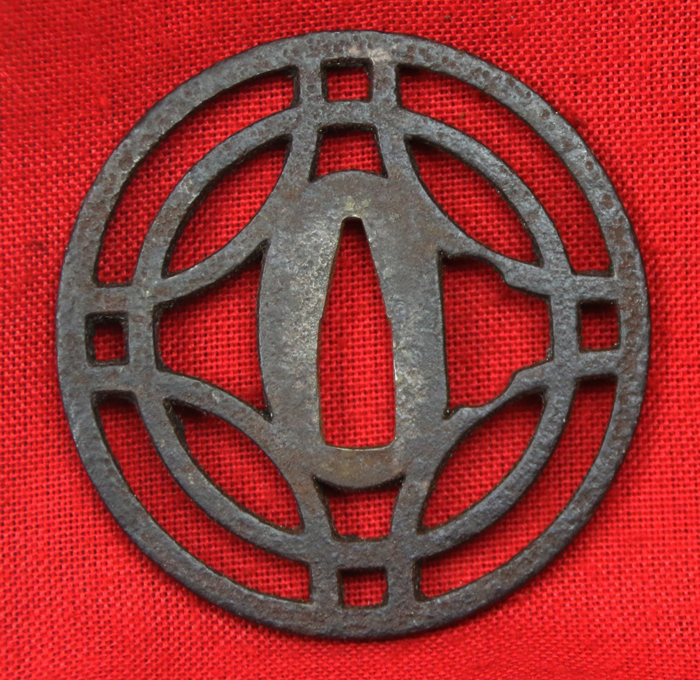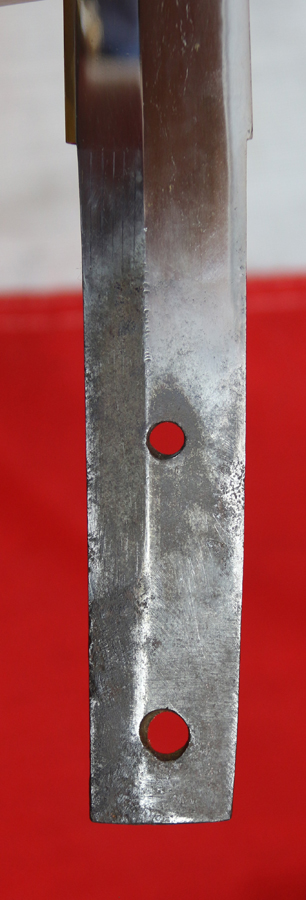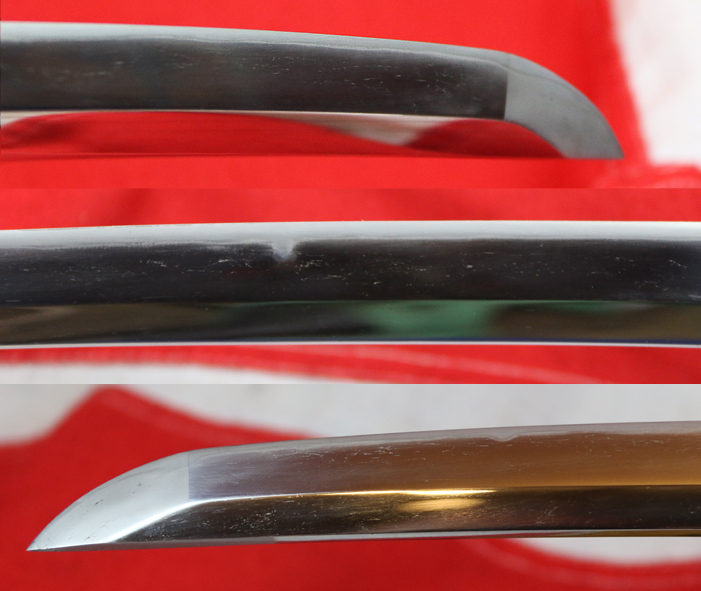A Fine Koto Period Wakizashi, Circa 1500 With Exceptional Mounts & Blade
The fuchigashira, are very special indeed hilt mounts and decorated with dragonfly and signed with an archaic style gold makers seal mark, and the menuki grip fittings, are of also stunning quality made in stunning quality shakudo. The menuki are based around the meditating Daruma. Daruma is a repesentation of a 5th century Buddhist monk,and has a design that is rich in symbolism and is regarded more as a talisman of good luck to the Japanese. He is completely wrapped in his robe, he holds a hossu-fly, the opposing menuki is showing, what is likely a view of Daruma wrapped in his cloak from behind, is inlaid with a pure gold seal mark of the maker, signed, Masayuki. The details in very high relief are accented with finely shakudo and gold inlaid in a Yanagawa style. This notable school takes rank with the Goto, the Nara, and the Yokoyoya in the extent of its influence, the numbers of its pupils, and the importance of the branch school founded by them. The founder, Yanagawa Naomasa (1692 ?1757 ) was a pupil of the early Yokoya and of the Yoshioka, and combined characteristics of both this school. Shakudo was historically used in Japan to construct or decorate katana fittings such as tsuba, menuki, and kozuka; as well as other small ornaments. When it was introduced to the West in the mid-19th century, it was thought to be previously unknown outside Asia, but recent studies have suggested close similarities to certain decorative alloys used in ancient Egypt, Greece, and Rome. The fittings are set within their two bespoke wooden display cases. Antique Japanese koshirae Japanese samurai sword mounts and fittings are considered as fine object d'art in their own right, and have been collectable as individual items or sets, since the Edo period. The tsuka ito hilt binding is of leather. The tsuba is a fine sukashi tsuba in iron. The saya is decorated with intricately layered pine needles, placed in position to appear natural and random but are actually methodically put in position, in an incredible time consuming skillful manner to appear random, but are not. The surface is then over laid in clear lacquer. The whole process to make thgis saya could have taken an artisan a year or even longer. Overall 24 1/4 inches long, blade length tsuba to tip 17 5/8 inches long
Code: 23140
5250.00 GBP


